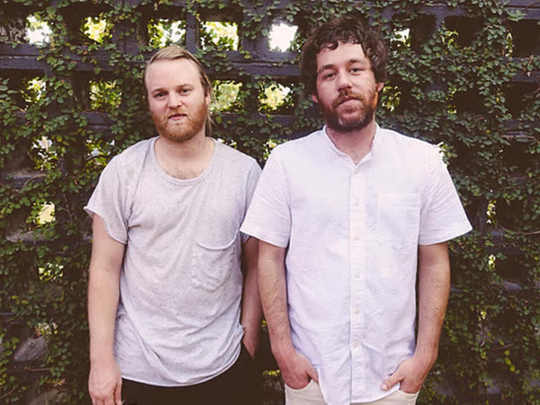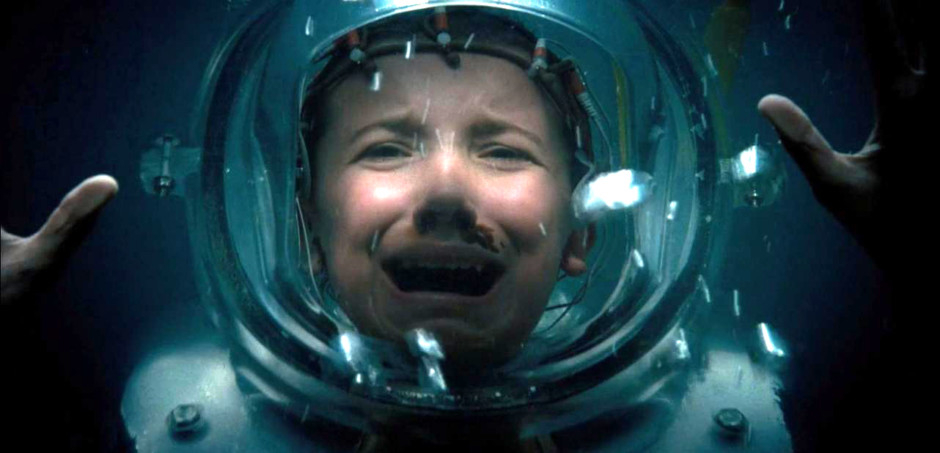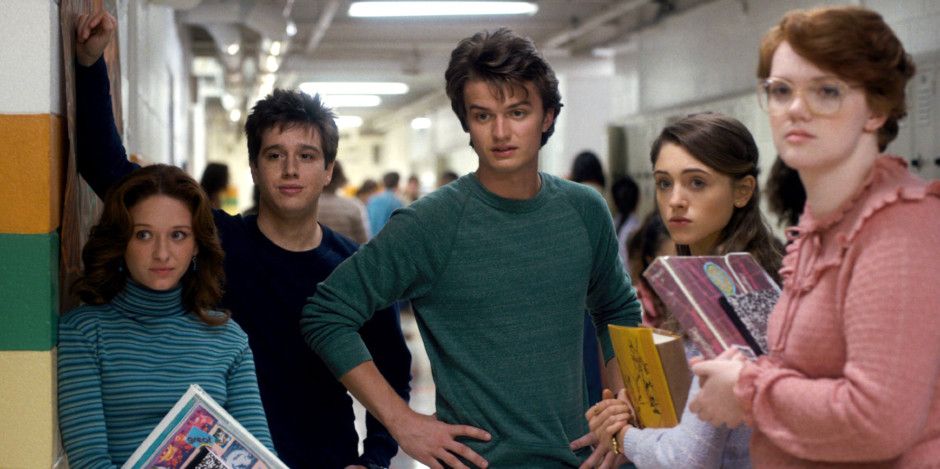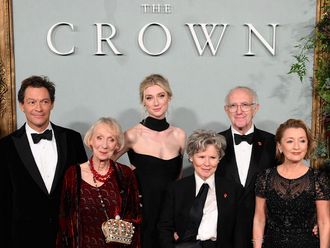
Two of the stars of Stranger Things, the ’80s-inspired Netflix series, never show their faces on-screen. The show, a mixture of science fiction, fantasy and horror, has attracted attention for its use of popcorn cinema touchstones. But its score is perhaps the secret ingredient, a mixture of icy new-wave hooks, spooky ambient textures and menacing drones made by Kyle Dixon and Michael Stein, both Austin, Texas, musicians who play in a synth-driven quartet called Survive.
As the showrunners Matt and Ross Duffer were pitching the idea for Stranger Things, they used a song by Dixon and Stein in a mock trailer for the show. Survive, which will release its second record, RR7349, on September 30, combines programmed drums with analogue synths, but the music on Stranger Things is far more nuanced. (The first of two volumes of the soundtrack was released on August 12; the second was released on Friday.)
Dixon and Stein jumped at the opportunity to work on the series, having compiled a library of material that didn’t seem to fit with any of their other recording projects. A combination of songwriting techniques followed, from collaborative jamming to fleshing out demos Stein recorded on his phone while working at a synth repair store.
Dixon and Stein spoke recently by phone from Austin about how to make an audience hear an era and working on one of the summer’s most popular TV shows. These are edited excerpts from the conversation.
Did the Duffers give you references from music of the period they wanted to evoke?
Dixon: Nothing too strong, really. If they wanted to use a Tangerine Dream song, they did. It’s in there as temp [music synced with rough footage as a place holder for the score], and we hear it and we’re like, “That’s great, just use that, there’s no point in us trying to make something better than that because it already works.”
Stein: When we would get some temp, you might even get a playful, little sad piano piece at times, and we knew that’s not what they wanted. And they’re like, “We don’t really know what we wanted.” [It was] just something that was mood-evoking.
Dixon: A lot of times, at least initially, we weren’t being weird enough. Especially as the season progresses, and things start to get weirder, we would try to do a more straightforward music, in our style, but it just didn’t have the same impact that a really bizarre, atonal, rhythmic thing would have.
When you got scenes, how much time would you have to turn something in?
Stein: Sometimes it would be like, “Hey, we need these four cues tomorrow, because we’re going to premiere it to the Netflix production team that’s up above us, and they have to sign off on everything.”
Dixon: “Execs want to see it, we need these scenes in there by tomorrow,” and then we’d be working all night.
The score is woven in very subtly. As composers, did you feel the responsibility to step back, or to step in and illustrate things more?
Dixon: The foremost function of a musical score is to tell you what you’re supposed to be feeling, and a lot of times, that’s taken care of by the picture. I think it’s just a stylistic choice on the director’s part, how heavy they want to hit it, and, luckily, the Duffers are tasteful.
Stein: They did want it to be bold, to some degree, so that it would get noticed as being a strong part of the show. But they very much wanted it to be reserved.
Dixon: It’s kind of a funny request: “We want people to be talking about the music for this show, but make sure it stays in the background.”
Stein: You have to know how to interpret that. Luckily, as songwriters, and just keeping each other in check a bit, if one of us wrote something that was just too much, you’d be like, “Hey, man, that’s cheesy.”
The show has gotten a lot of response because it nods to a certain period, but the sounds — not melodies, but tones — associated with music from that era may have an even stronger pull.
Dixon: That’s something that we’re definitely very conscious of when we’re recording, to make sure that the sounds we use don’t just sound like a stock preset. We want to make sure that it has enough movement and expressiveness. The tonal quality and texture of the sound itself is at least as important, if not more important, than the notes that are being played.
Stein: Sometimes you’ll just start by exploring the sonics of what you can do with a synth, and eventually, you’ll come across something, and you probably weren’t even trying to write a melody. And then you make a song around it. Then you try to play that — one time I’m like, “Hey, Kyle, let me show you this melody I wrote at work,” and then I play his keyboard, and I’m like, “I can’t even show you, because the sound isn’t correct.” The sound can very much influence how you perceive the mood.
Dixon: And even just dealing with a synthesizer, because of the way it works, you literally can only play certain sounds a certain way. If it takes a long time for the sound to get loud, you can’t play it fast, because you just won’t hear anything. Versus if you were playing a violin, you would do that all manually.
Stein: You can basically take sock hop, distort it and speed it up, and you have punk rock. If you change the timbre of something, it becomes a whole new thing.















